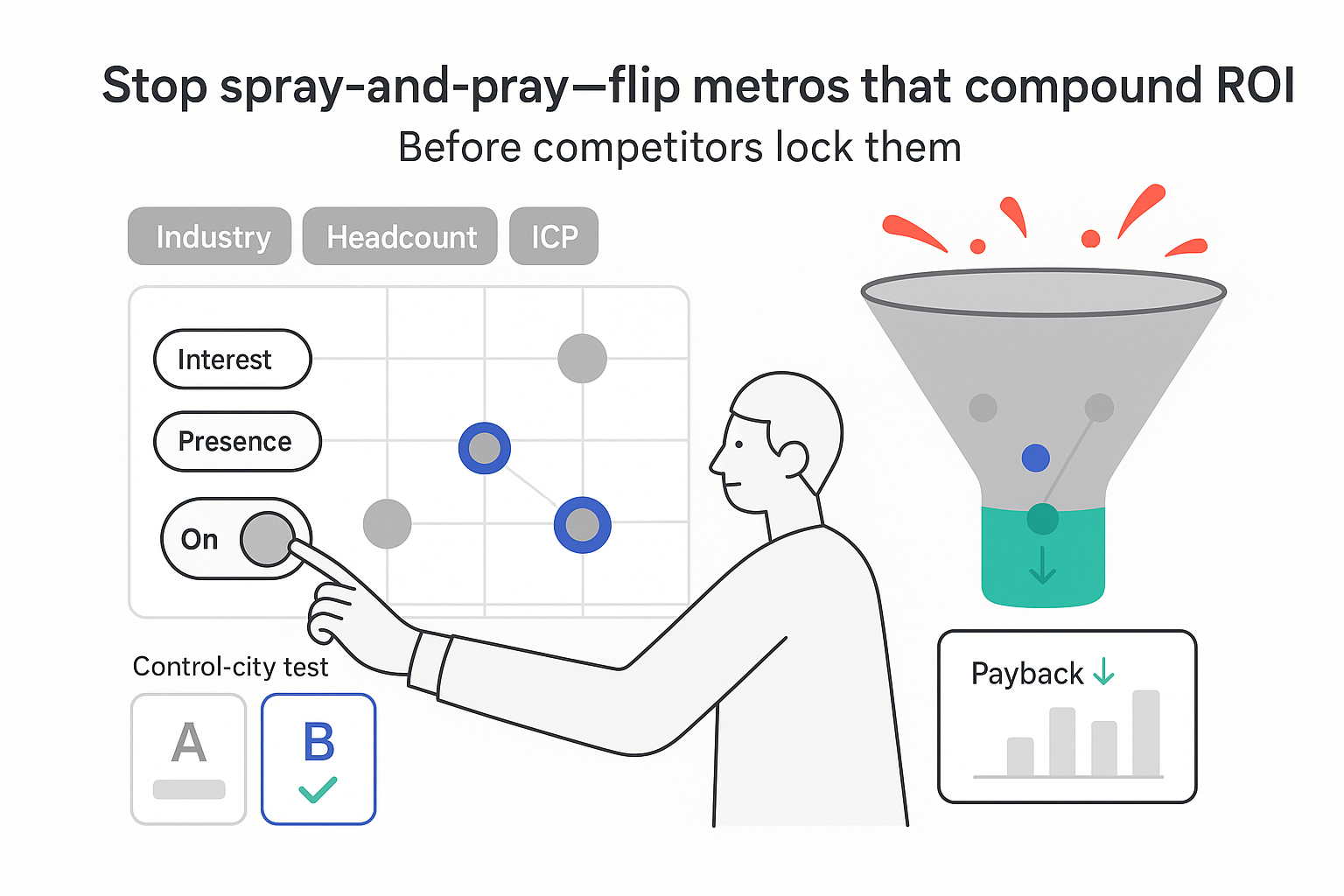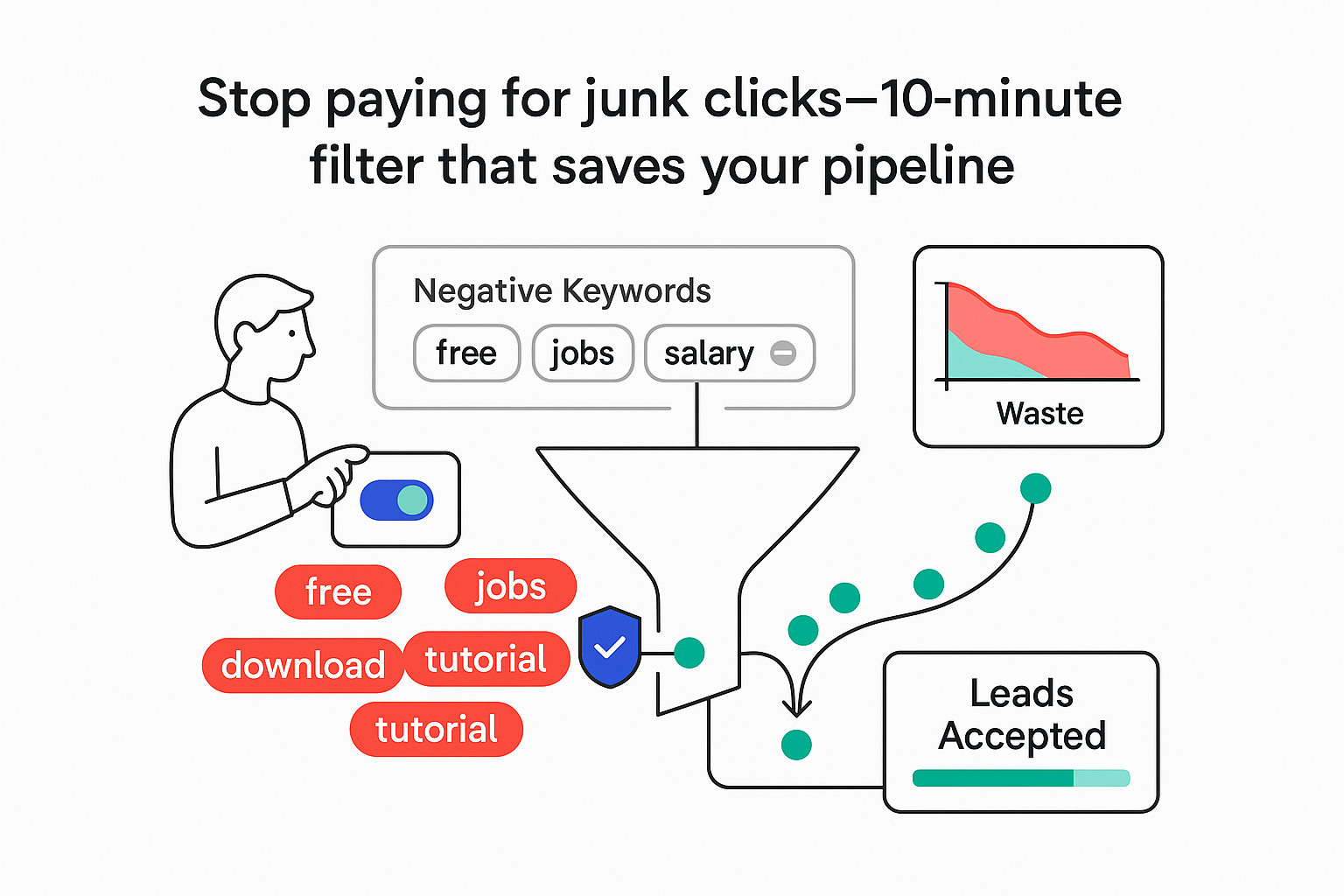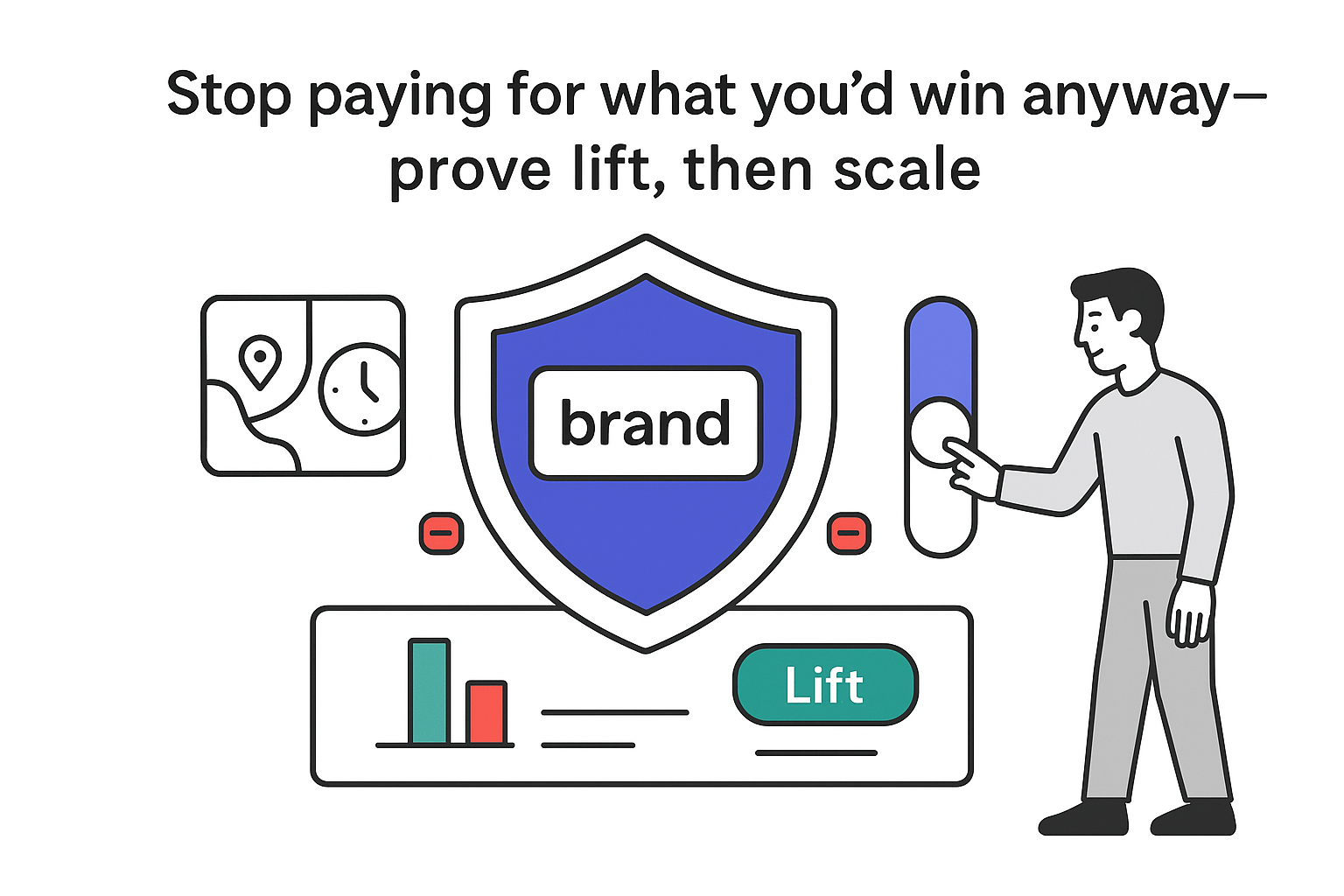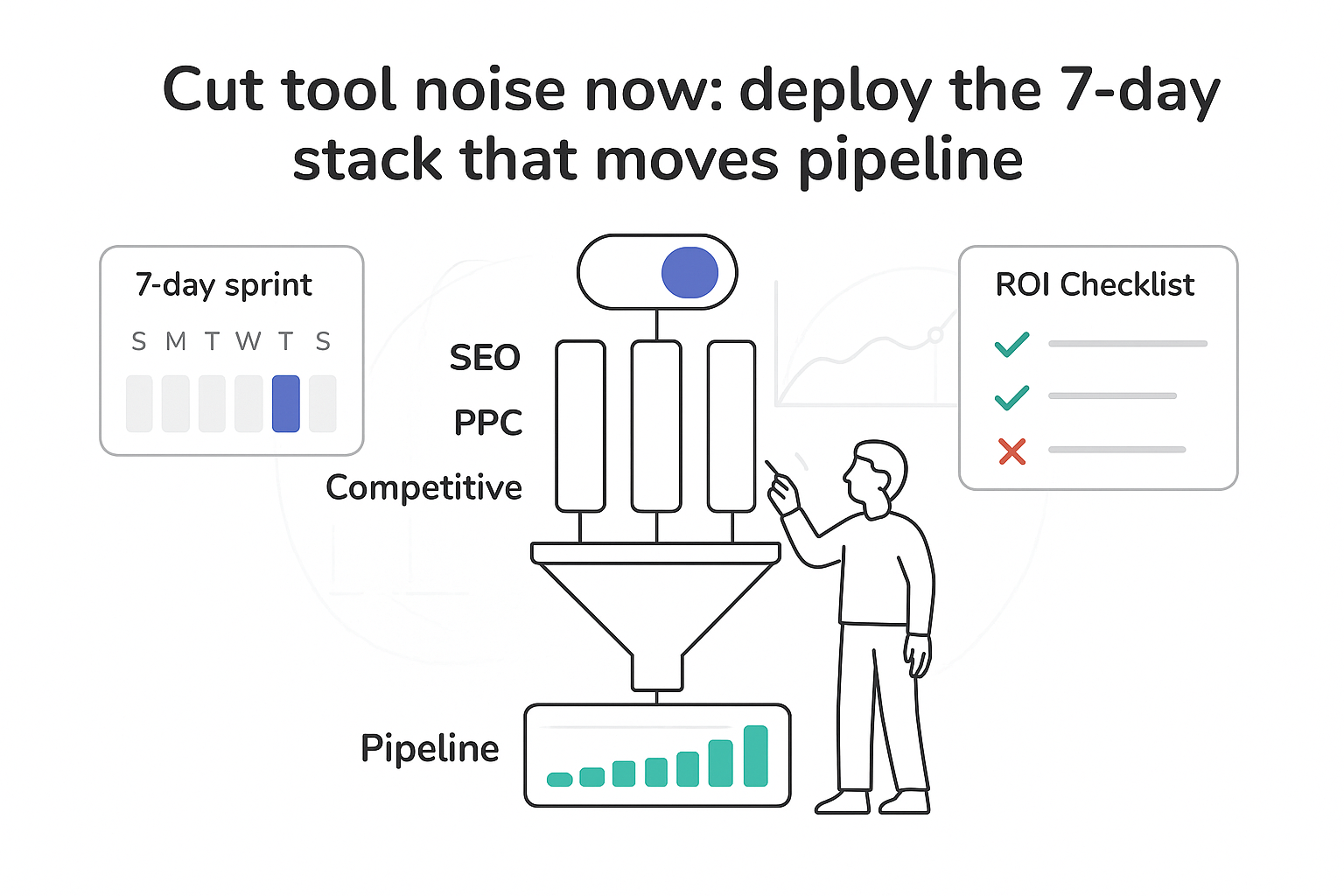CEOs do not need more hype. They need a clear path that protects customer data, satisfies regulators, and still moves the revenue needle. Private LLM development can do that when you treat it like an operating decision, not a science project. Here is a practical guide you can skim in minutes and share with your team without becoming the "AI person" in the room.
A pragmatic buyer’s framework for private LLMs
If you have five minutes, use this quick scoring exercise. Score each criterion from 1 (low) to 3 (high), add them up, and read the traffic light.
- Data sensitivity: Will models touch PII, PHI, trade secrets, or deal docs.
- Compliance risk: Do HIPAA, SOC 2, ISO 27001, PCI, ITAR, or similar apply.
- Latency needs: Do you require sub-second replies or is 2 to 5 seconds fine.
- Control requirements: Do you need strict data residency, key control, or audit trails.
- Internal AI maturity: Do you have MLOps, SRE, security engineering, and a product owner.
- Budget and TCO tolerance: Can you fund GPUs and people, even if it saves later.
- Time to value: Do you need wins inside 60 days or can you phase it.
Traffic light guidance
- Green: 7 to 10. Start in a private VPC or with zero-retention APIs under strict governance. Aim for a 4 to 6 week pilot.
- Yellow: 11 to 15. Plan a private LLM in your VPC or private cloud. Keep ultra-sensitive items out of scope for phase one.
- Red: 16 to 21. Consider on-prem or air-gapped for core workflows. Use VPC or zero-retention APIs for non-sensitive tasks only.
From pilot to production: path, KPIs, and timelines
Pilot path that actually lands
- Week 0 to 1: Pick one workflow with measurable pain (for example, support ticket deflection). Consider a time-boxed AI POC to de-risk scope and timelines.
- Week 2 to 3: Stand up infra in a VPC or a sandbox on-premises. Enable logging, Key Management Service (KMS), and role-based access.
- Week 4 to 6: Ship a controlled pilot to 10 to 30 users. Track accuracy, latency, and deflection or time saved.
Sanity checks before go-live
- Data map completed and cleared by security.
- Retention policy set with auto-deletion.
- Keys managed in your KMS; no default cloud keys.
- Audit logs routed to your SIEM and reviewed.
- Human review and feedback loops ready for low-confidence responses.
- Success metrics and stop/rollback rules defined.
Quick wins vs long horizon outcomes
- Quick wins: RAG on knowledge bases, sales playbooks, and policy docs. Expect measurable lift inside 30 to 45 days. Improve retrieval quality with better chunking and embeddings - see improving text embeddings with LLMs.
- Long horizon: Deep fine-tuning on complex workflows, multi-tool agents, and cross-system orchestration. Expect staged value over 3 to 9 months.
KPI mapping that ties to revenue
- Ticket deflection rate: 15 to 40 percent in phase one for well-structured FAQs.
- Cycle time: 20 to 50 percent faster research or drafting on repeatable tasks.
- CAC to LTV impact: Small gains in sales cycle speed and proposal quality can raise close rates and average deal size. Even a 5 percent lift on large deals moves the P&L.
- Benchmarks vary by domain and corpus quality; sanity-check against internal baselines and published studies (for example, HELM, MTEB). For model tradeoffs, see our LLM Scorecard and Demystifying AI Model Evaluation: A Comprehensive Guide.
Timelines by phase
- Discovery: 1 to 2 weeks. Data map, risk review, and scope one workflow.
- Pilot: 4 to 6 weeks. Build a basic RAG app, add guardrails, and run with real users.
- Production: 8 to 16 weeks. Harden infra, add observability, role-based access, and change control.
Acceptance criteria that keep everyone honest
- Accuracy grounded to sources at or above 80 percent for the chosen workflow.
- Latency under 2 seconds for 90 percent of requests or another SLA you define.
- Measurable lift on the north-star metric (deflection, cycle time, or quality).
- Zero PII leaks in evals and live testing.
Operational benchmark ranges to sanity-check
- Knowledge assistant grounded accuracy: 70 to 90 percent on well-chunked corpora.
- First response time: 300 ms to 2 s on small language models; 1 to 4 s on larger LLMs inside a VPC.
- Treat these as planning guardrails, not guarantees; confirm with your own eval sets.

What a private LLM is and where it runs
Private LLMs are language models that run in your controlled environment - on-premises, in a private cloud, or inside a tightly locked VPC. Prompts, documents, and model outputs do not leave your boundary. That is the core idea. For foundational context, see Large Language Models.
How this differs from public LLM APIs and "enterprise modes"
- Public API: Fast to try and pay-per-token, but data flows to a third party. Zero-retention modes help, yet you still depend on a shared runtime.
- "Enterprise mode": Better isolation, SSO, and data controls, but not always under your keys or network.
- Private LLM: Your network, your keys, your logs, and model customization on your data.
Think of a spectrum
- API isolation: Zero-retention and no training on your prompts.
- VPC hosted: Private endpoints, your KMS, IP allowlists, and peering.
- Private cloud: Dedicated accounts and stricter tenancy rules.
- On-premises: Your racks and your firewalls.
- Air-gapped: No external network paths.

Deployment options with trade-offs
-
On-premises
- Pros: Maximum control and data residency; custom hardware; full audit.
- Cons: CapEx, longer procurement, power/cooling, and staffing needs.
-
Private cloud
- Pros: Fast provisioning, elastic capacity, private networking, managed storage.
- Cons: Shared facility; you rely on provider controls and SLAs. See Cloud Compliance and Security for practical controls.
-
VPC deployment
- Pros: Your network boundary in a major cloud; private endpoints and KMS; good middle path. See Partnered with AWS for enterprise integrations.
- Cons: Capacity spikes can raise pricing; you still manage IAM and ops.
Minimum viable foundations
- Orchestration with GPU nodes for inference.
- Inference servers that support multi-model serving and throughput optimization.
- Data layer: object storage for documents and a vector store (for example, PostgreSQL with pgvector or a private managed option).
- Security: your KMS, secret management, SSO, private networking, WAF, and SIEM.
- Observability: tracing, metrics, logs, and a model analytics layer for prompt spans and errors.
Procurement and IT questions to settle early
- What are our data residency and retention rules.
- Do we have budget for H100/A100/MI-class GPUs, or will we size for smaller models.
- Who owns incident response and change control.
- How will we segment environments (dev, staging, prod).
- What is our backup and restore plan for vector stores and indices.
Readiness essentials
- IAM configured for least privilege.
- KMS ownership and rotation clear.
- Network boundaries mapped; no public endpoints for sensitive paths.
- Logging and alerting tested with simulated incidents.
- Model registry and versioning in place.
For help designing enterprise-grade deployments, see Enterprise LLM.
Governance and risk controls that actually work
Start with policy, then wire it into code. A small amount of planning here prevents bigger headaches later. For a deeper dive, review Data Governance and DevSecOps approaches that enforce policy in CI/CD and runtime.
Core policies to put on paper
- PII/PHI handling: What fields are allowed; how to mask before indexing; who can view raw data.
- Retention windows: Define per data type (documents, chat logs, embeddings, outputs).
- Encryption: In transit with modern TLS; at rest with your KMS keys; rotate on schedule.
- Audit logs: Log prompts, retrieved chunks, tools called, and outputs; ship to SIEM.
- Model and data lineage: Track which corpus version and which model served each response.
- Access controls: Role-based access, SSO, conditional access for sensitive projects.
Retrieval safety guardrails
- Prompt filtering: Block secrets, client names, and "help me exfiltrate"-style prompts.
- Document allowlists: Index only approved sources; tag owners and expiry dates.
- Red teaming: Run injection, exfiltration, and jailbreak scenarios on a schedule.
- Output filters: PII redaction, toxicity filters, and regex checks for forbidden terms.
- Human review: Queue low-confidence answers for approval.
Mapping to frameworks
- SOC 2: Access, change control, monitoring, vendor management.
- ISO 27001: Risk register, policies, and controls across the stack.
- HIPAA: Privacy rule, security rule, BAAs, minimum necessary access.
Rollout playbook
- Write policies with legal, security, data, and product in the room.
- Enforce with a policy engine (for example, allow/deny on retrieval and tool use).
- Instrument everything; if it is not logged, it did not happen.
- Review quarterly; update allowlists and expiry dates.
If your teams must meet HIPAA, SOC 2, or ISO 27001, align build-out with Cloud Compliance and Security controls and document evidence up front.
Cost and ROI: the breakeven logic
Private LLM economics depend on volume, privacy needs, and model size. Break it down and the choice becomes clearer.
Cost components to model
- Compute: GPUs for fine-tuning and inference (H100/A100/MI-class for larger models; L4-class for smaller ones).
- CPU and memory: Retrieval, ETL, evaluations, and lighter models.
- Storage: Object storage for docs, snapshots, model weights; SSD for vector DBs.
- Networking: Private links, peering, and load balancers.
- Model licensing: Open models vary in commercial terms; verify licenses.
- MLOps and observability: Registry, pipelines, logging, tracing.
- Maintenance: Patching, backups, eval runs, on-call coverage.
Hidden costs to watch
- Egress fees when syncing large corpora.
- Support SLAs for vendors and clouds.
- Idle GPU time when demand is uneven.
- Re-training and eval cycles after policy or data changes.
- Procurement time; delays carry cost.
API pay-per-token vs self-hosting
- Below a certain monthly token volume, APIs can be cheaper and faster to start.
- Above that point, private hosting can win - especially when privacy rules push you there anyway.
Breakeven sketch
Let C_api be API cost per million tokens; let C_self be all-in per million tokens when self-hosting (GPU amortization, power, staff, storage). If monthly_tokens × C_api > monthly_tokens × C_self + fixed_overhead, private hosting likely wins.
Sample ranges to frame a discussion
- Strong API models: low to mid two digits per million tokens.
- Self-hosted SLMs: mid single digits per million at steady load.
- Larger LLMs: higher per-million costs but can drop with utilization and quantization.
CFO-friendly grid
- Low volume + low sensitivity: APIs with zero retention and strict DPAs.
- Medium volume or medium sensitivity: VPC-hosted private LLMs.
- High volume + high sensitivity: On-prem or air-gapped for core workflows; use VPC for bursts.
Customization and high-impact B2B use cases (plus quick answers)
Private LLM development pays off in three buckets.
1) Productivity
- Knowledge search that actually finds the right doc; less context switching and faster onboarding.
- Ticket deflection for IT and customer support.
- Proposal, SOW, and RFP drafting with policy-checked language.
2) Risk reduction
- Data remains in your network or private cloud.
- Precise access controls and audit logs.
- Retrieval filters that avoid "off-limits" content.
3) IP control
- Fine-tune on your terminology, style, and decision logic.
- No training bleed into third-party systems.
RAG vs fine-tuning
- Retrieval-augmented generation: Keep a general model, fetch the right snippets at query time, and answer with citations. Best for fast updates, clear sources, and lower risk. For stronger retrieval, see improving text embeddings with LLMs.
- Fine-tuning: Teach the model your tone, formats, and decision patterns. Best for repeatable tasks with stable rules and when you want fewer tokens at inference.
Instruction tuning and adapters
- Instruction tuning shapes how the model follows task directions without changing core knowledge.
- Parameter-efficient methods (for example, adapters) add small layers on top of the base model so you can keep multiple variants at lower cost.
Evals and guardrails
- Build an eval set from real conversations or tasks. Label correct answers, sources, and acceptable ranges.
- Track grounding rate, citation accuracy, latency, error types, and drift over time. If grounding or win rate drops, retrain or re-index. For methodology, see LLM Scorecard and Demystifying AI Model Evaluation: A Comprehensive Guide.
Model strategy
- SLMs for narrow, high-volume jobs: classification, extraction, short-form drafting.
- Larger LLMs for complex reasoning, multi-step workflows, or high-risk outputs.
- Router pattern: Let an SLM handle most traffic; escalate tough cases to a larger model.
Decision helper
- If you need accuracy with citations and frequent content updates, start with RAG.
- If you need consistent style, format, and structure on stable tasks, add fine-tuning.
- If latency and cost are tight, start with SLM + RAG and escalate only when needed.
Industry use cases (B2B services)
- Knowledge base assistant: Surface the right section, cite it, and suggest a next step. Track time to first answer, citation accuracy, and deflection percentage.
- Sales enablement: Summarize account notes, draft call prep, pull references from case studies. Track prep time saved and meeting outcomes. Explore Case studies.
- Proposal drafting: Assemble scope blocks, legal language, and delivery plans from approved libraries. Track first-draft time and redlines required.
- Compliance Q&A: Answer policy questions with citations and retention reminders. Track audit findings and response time.
- ITSM deflection: Classify tickets, suggest fixes, and generate clear replies. Track auto-resolved rate and average handle time.
- Internal code assistant: Boilerplate, tests, and small refactors inside a private repo boundary. Track pull-request throughput and defect rates.
- Regulated verticals: See Healthcare and Government approaches.
Mini case blurbs
- Support deflection: A mid-market services team indexed 8 years of help docs and runbooks. In 6 weeks they reached a 28 percent deflection rate on tier-one tickets and cut 45 seconds off average handle time. The model answered only with grounded content and flagged unclear cases for review.
- Proposal drafting: A consulting firm built a proposal builder with approved scope blocks and rate cards. First drafts dropped from 4 hours to under 90 minutes. Win rate nudged up by 6 percent as proposals landed faster and cleaner.
Quick answers I’m asked most
- What is the typical timeline to pilot and production? A 1 to 2 week discovery, 4 to 6 week pilot, then 8 to 16 weeks for hardening and rollout.
- Is my data used to train public models? Not when you run private LLMs. Set third-party contracts to zero retention and keep prompts, logs, and embeddings in your environment. See Security certs.
- How do RAG and fine-tuning differ for my use case? Use RAG when content changes often or when you need citations; use fine-tuning for consistent formats, tone, and stable task behavior. Many teams start with RAG and add parameter-efficient tuning later.
- Which models can be deployed privately today? Common options include Llama 3, Mistral/Mixtral, Falcon, and Gemma, with appropriate licenses. Distilled or quantized variants can help on latency and cost.
- What skills and roles are required? A product owner, an ML engineer, a platform/MLOps engineer, and a security lead at minimum; add a data engineer for pipelines. Larger programs benefit from an SRE and a governance owner.
- How do I ensure SOC 2, ISO, or HIPAA compliance? Map controls to policy, enforce least-privilege IAM, manage keys in your KMS, log to SIEM, use change control, run regular access reviews, and document data flows with audit evidence.
- When does private hosting beat API costs? When monthly token volume climbs and privacy rules require tighter control. If your per-million-token cost (including infra and staff) drops below API pricing at expected volume, private hosting can pay off.
- How do I measure success post-launch? Tie metrics to the workflow: accuracy with citations, latency, and user satisfaction for assistants; deflection, handle time, and first-contact resolution for support; draft time and close rates for sales and proposals. Watch model drift and safety events.
Ready to explore private LLMs for your org? Learn more with Private LLMs with Datasaur, review our Case studies, check Security certs, and see how we are Partnered with AWS.







.svg)